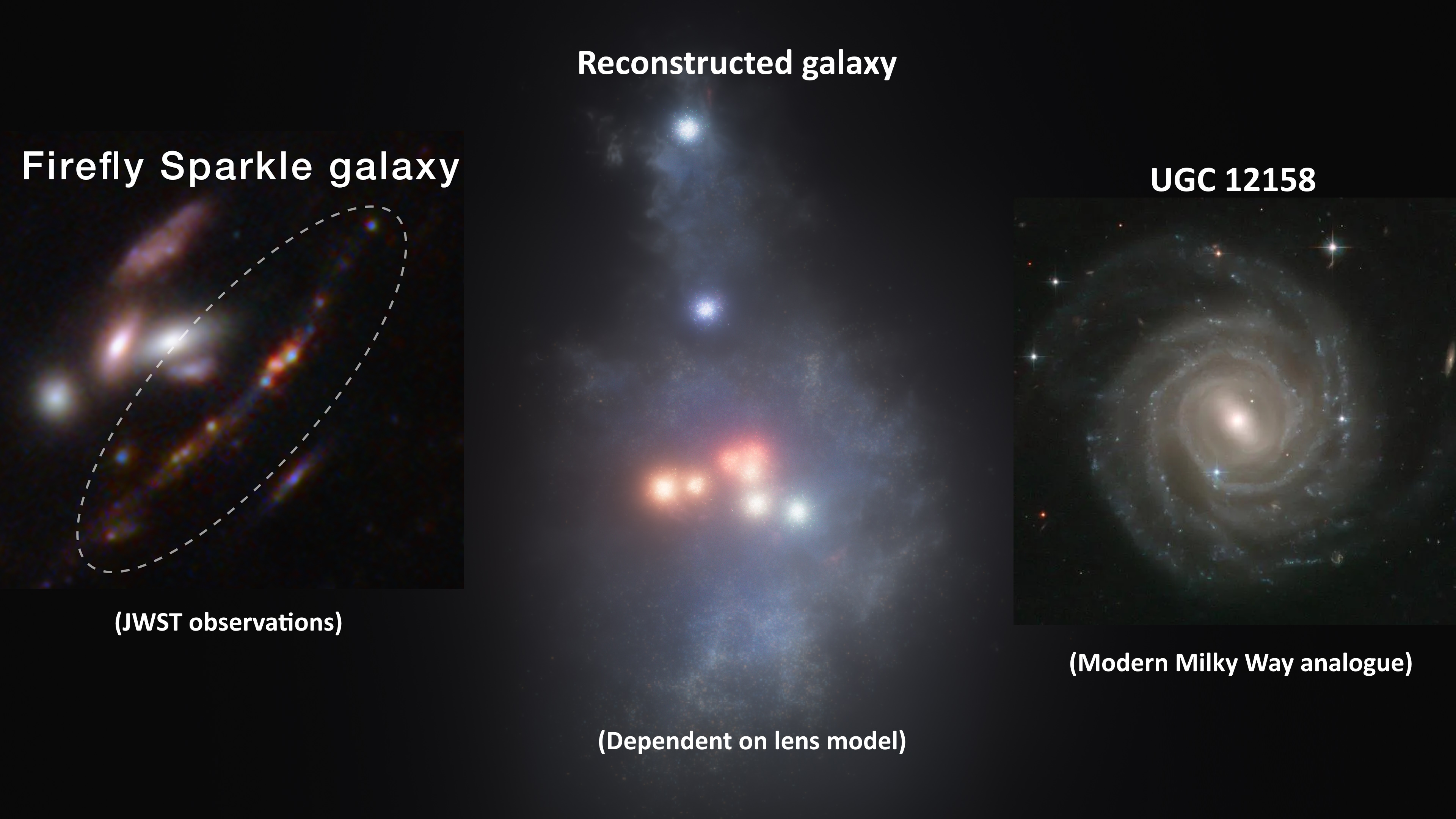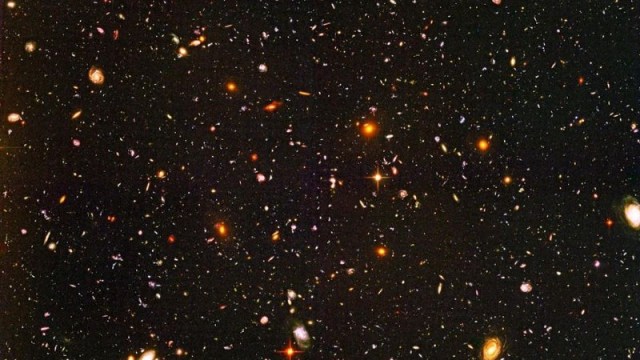The universe is dying, new study confirms

This map of the entire sky shows the location of 739 blazars used in the Fermi Gamma-ray Space Telescope's measurement. Brighter areas have stronger gamma rays. Image source: NASA/DOE/Fermi LAT Collaboration
- Scientists track gamma rays across the universe’s extragalactic background to calculate all of the starlight ever produced.
- For 10.8 billion years, star production has been decelerating.
- The research team measured nine years worth of data from the universe’s 739 known blazars.
The good news is that scientists believe they’ve figured out how much starlight the universe has ever produced since the Big Bang. Exciting. The bad news? Well, apparently star production peaked a long, long time ago, and ever since, the universe has been in the process of dying. Only seven new stars are born a year these days. You can keep buying green bananas, though; there’s time: We still have many billions of years before the stars that already exist go dark and cold.

This map of the entire sky shows the location of 739 blazars used in the Fermi Gamma-ray Space Telescope’s measurement. Brighter areas have stronger gamma rays.
Image: NASA/DOE/Fermi LAT Collaboration
Counting starlight
In Science, the Fermi-LAT Collaboration published, on November 30, a new inventory and history of the universe’s light. So, how much light has the universe produced? 4 × 10⁸⁴ photons. To spell that out, that’s 4,000,000,000,000,000,000,000,000,000,000,000,000
000,000,000,000,000,000,000,000,000,000,000,000,000,
000,000,000 photons.
The lead study author of the study, astrophysicist Marco Ajello, said his team was able to measure the entire amount of starlight ever emitted using the Fermi telescope.
“This has never been done before,” he told Clemson University’s the Newsstand. “Most of this light is emitted by stars that live in galaxies. Every single star that has existed has contributed to this emission, and we can use it to learn all the details about star formation and evolution and galaxy evolution.”
The Fermi team has been measuring nine years worth of data from the universe’s 739 known blazars.

Artistic rendering of a blazar accelerating protons that produce pions, which produce neutrinos and gamma rays. Image source: IceCube/NASA
What the blazar is a blazar?
As galaxies spin around a supermassive black hole at their center, charged particles circling the event horizon develop strong magnetic fields that further excite the particles, causing them to emit radiation at very high energies. Such galaxies produce a great deal of light at their centers, and they’re referred to as “active galactic nuclei” (AGN). Some AGNs seem brighter than others from here on Earth. They’re not really — they’re just the ones pointed straight at us.
Jets of material shot out of such AGNs are called “blazars.” The quasar sound-alike name gets its “Bl” from “BL Lacertae,” after the constellation in which the first recorded one, back in 1929, originated. Blazars travel at near light speed, and within them are gamma-ray photons the Fermi Gamma-ray Space Telescope is designed to detect.

Artist’s conception of a blazar. Image source: JPL
Encounters with the EBL
As they travel across space, blazar gamma-ray photons collide with the universe’s extragalactic background (EBL), the background radiation produced by star formation. Says Ajello, “Gamma-ray photons traveling through a fog of starlight have a large probability of being absorbed. By measuring how many photons have been absorbed, we were able to measure how thick the fog was, and also measure, as a function of time, how much light there was in the entire range of wavelengths.” He adds, “It’s like following the rainbow till the end and finding the treasure. That’s what we found.”
In terms of the blazars, NASA columnist Ethan Seigel writes, “The closest one comes to us from just 200 million years ago; the most distant has its light arriving after a journey of 11.6 billion years: from when the Universe was just 2.2 billion years old.”
The timeline behind and ahead
The study’s Vaidehi Paliya says, “By using blazars at different distances from us, we measured the total starlight at different time periods. We measured the total starlight of each epoch — 1 billion years ago, 2 billion years ago, 6 billion years ago, etc — all the way back to when stars were first formed.”
The notion that the universe is “dying” is due to the fact that star production, which is decreasing, is a grand recycler of energy, matter, and elements that “nourish” the universe. Our survival relies, quite literally, on starlight and its generation. As Dieter Hartmann, another author of the study, says: “Without the evolution of stars, we wouldn’t have the fundamental elements necessary for the existence of life.”





